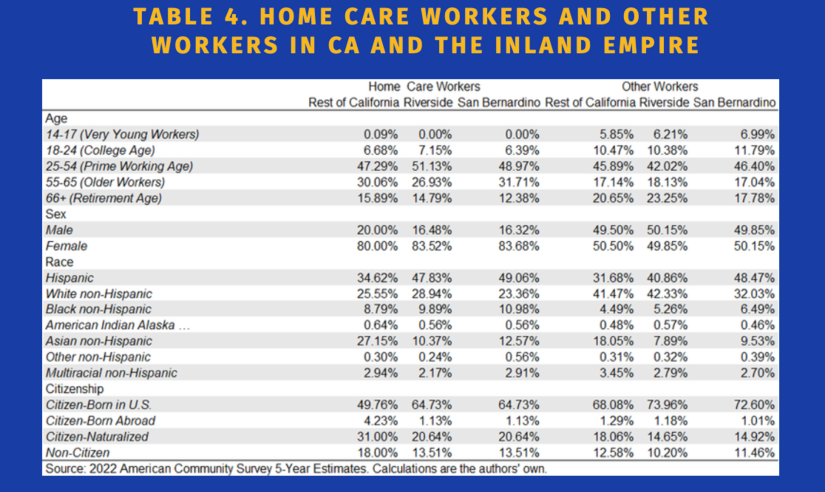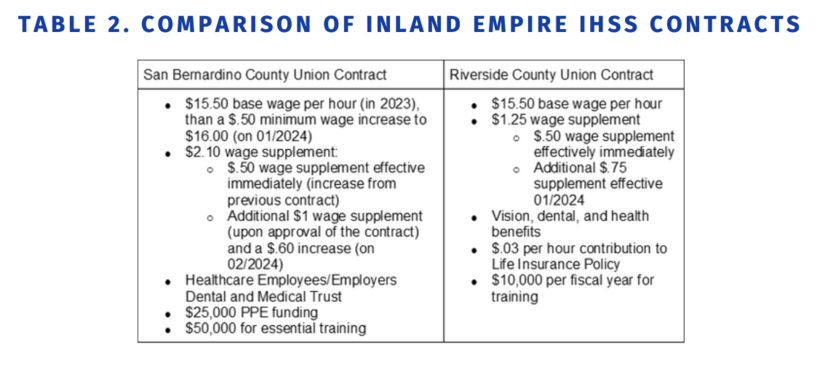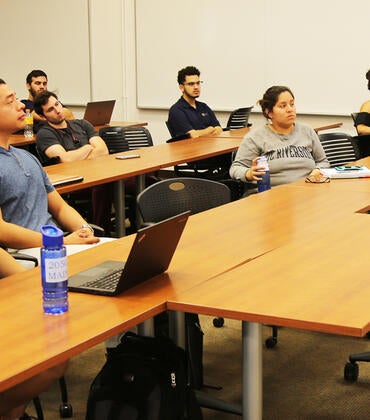
The number of aging Americans, including those with disabilities, is growing across California as well as the Inland Empire. The question is, who is caring for them?
A new report, “The State of Work: Home Care Providers in the Inland Empire” published by UC Riverside’s Inland Empire Labor and Community Center, or IELCC, shows the state’s senior population increased from 4.5 million in 2012 to 6.1 million in 2022 and is projected to increase to nearly 8.5 million by 2035. Additionally, the number of seniors with disabilities is expected to rise from 1.2 million in 2022 to 1.7 million by 2035.
Between 2012 and 2035 the number of people 65 and older comprising the Inland Empire’s population is expected to nearly double, changing from 470,000 to 910,000.
The report also found that more than 83% of care for older Americans in the Inland Empire is primarily administered by women; in Riverside County more than 58% of workers are Hispanic or Asian and about 28% are white. In San Bernardino County more than 60% of workers are Hispanic or Asian and about 23% are white.
As the Inland Empire’s population ages, researchers note the increased demand for services, including those provided through California’s In-Home Supportive Services Program, known as IHSS. IHSS provides publicly subsidized in-home assistance for eligible low-income clients over 65 years of age and disabled people. Most home care providers are employed directly by IHSS or through private agencies. Researchers found five major challenges: low pay, little access to additional training/education, bureaucratic barriers, long work hours and unpaid labor, and family responsibilities among the workers they interviewed.
“Home care workers in the Inland Empire, as elsewhere in California, earn very low incomes. Our analysis of 2022 American Community Survey 5-year data estimates reveal that the median personal annual income of home care workers is $21,402 in California, $21,000 in Riverside County, and $19,488 in San Bernardino County,” researchers indicate in the report.
Many of these workers are family members caring for their own elderly or disabled relatives; for others home care is their job, but with most IHSS cases these workers are only allotted about 3 to 5 hours of labor per week. It’s a rigid number of hours that does not reflect the true time it takes to care for elders, especially those with disabilities, researchers said. In San Bernardino County IHSS home care providers receive $18.10 an hour, compared to $18.50 in Riverside County through their union contracts.
“IHSS workers’ level of compensation is inadequate to meet rising living costs and fails to recognize the critical services these workers provide,” researchers wrote in the report.
“California’s home care workers, predominantly women and often from marginalized communities, exemplify the persistent gender inequality in labor markets. Despite their critical role in supporting seniors and individuals with disabilities, they face wages far below the state’s living standards, averaging $16.64 per hour,” said David Mickey-Pabello, director of research at the IELCC.
Currently labor unions are working with Inland Empire IHSS workers to raise their pay as well as improve their working conditions and their access to education and training. However, many private sector home care workers are not unionized.
“Unions have been pushing for a policy change so that the state is the employer of record and unions can negotiate IHSS contracts statewide rather than county by county,” said Chuy Flores, IELCC policy and strategy director. This policy change is likely to help to improve IHSS workers’ wages and benefits while and addressing unequal compensation among IHSS workers across counties.”
Collective bargaining, along with increased public investment in the home care workforce at all levels of government, can also help decrease worker burnout and turnover as well as staffing shortages, Flores said.
Access full report: ielcc.ucr.edu





